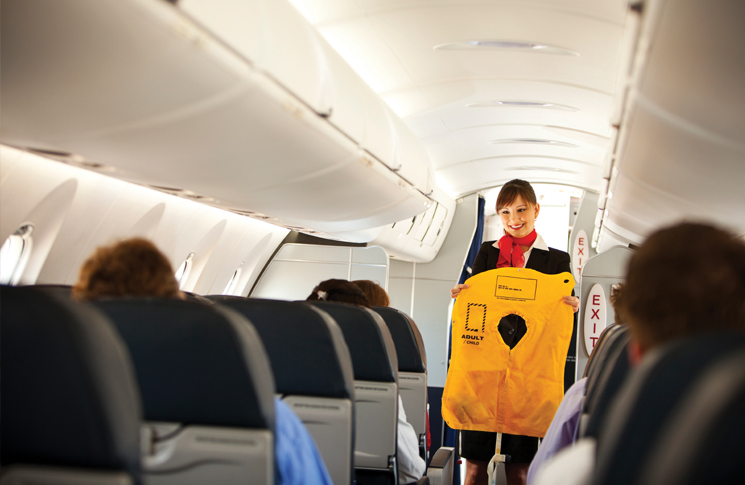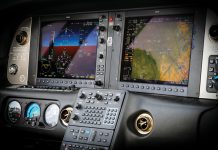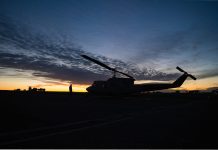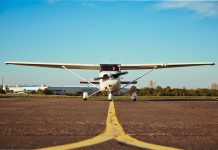As a passenger, do you know what to do in an emergency? We introduce some of the safety features and procedures that cabin crew use to protect passenger safety.
- In case of an emergency evacuation on landing, how long should it take to evacuate all passengers and crew from an A380 using the slides?
- 90 seconds
- as long as it takes—it’s a large aircraft
- three minutes
- Can window blinds be used during take-off and landing?
- yes, to block sunlight
- yes, with permission from the cabin crew
- no, because the cabin crew need to be able to see outside during take-off and landing in case of any emergency that may occur
- There are small black triangles above some windows in the cabin. What are they for?
- part of the aircraft interior design
- to show the best place for cabin crew/flight crew to see ice on the wing
- to show the best seats for passengers
- I want to sit on the overwing exit row for the legroom. What do I need to know?
- nothing, it’s just another seat
- the cabin crew will ask if I am happy to operate the exit during an evacuation
- I will not be able to stow my luggage under the seat in front
- What items are commonly featured in the safety demonstration?
- safety card, seat belt, oxygen, life jacket
- cabin floor lighting and exits
- fire extinguisher and life rafts
- What is the reason for dimming the cabin lights on night take-off and landing?
- so the light doesn’t blind another aircraft
- to make the passengers sleep
- in an emergency, the passengers/crews eyes have adapted to night vision
- If I lose my smart phone in my seat, what should I do?
- Ask the cabin crew to retrieve it, as it’s a lithium battery and could cause a fire.
- retrieve it myself
- move the seat to gain access to it
- Can you use an oxygen mask during a fire onboard?
- yes
- yes, with cabin crew or flight crew permission
- no, oxygen feeds fire
- Why is the ‘brace’ position important in an emergency landing?
- It is the most comfortable position.
- It has been heavily researched and has proven to save lives.
- It is the best position to save dental integrity in passengers
- Why do the cabin crew not talk during take-off and landing?
- because they are thinking about what they want to do when they get home
- because the crew don’t like to talk to passengers
- because the crew will be doing a ‘silent review’ in case of an emergency
- How long does the emergency oxygen on aircraft last?
- between 15 and 20 minutes
- it doesn’t run out
- one hour
- In an emergency evacuation, you should take off your glasses and shoes with heels. Why?
- to avoid injury to yourself and others
- it’s fine to keep shoes and glasses on
- to stop a potential puncture to the slide
- During boarding and the safety demonstration the cabin crew are looking for ABPs. What is an ABP?
- anti-Boeing person
- angry boarding passenger
- able-bodied passenger to assist in case of emergency
- When can cabin crew initiate an evacuation?
- they cannot, the pilot has to command it
- at anytime
- when the emergency is catastrophic
- When should lifejackets be inflated?
- once in the water
- before leaving the cabin
- once clear of the aircraft
Answers:
1 (a) 90 seconds is the maximum evacuation time for any aircraft.
2 (c)
3 (b)
4 (b) and (c)
5 (a) and (b)
6 (c)
7 (a) Moving the seat can cause a break to the battery and set it on fire.
8 (c)
9 (b)
10 (c)
11 (a)
12 (c) Is the correct answer although (a) can be taken in to consideration!
13 (c)
14 (c) Catastrophic – fire, water landing, break up of aircraft.
15 (c) Reference to Ethiopian Airlines flight 961 landing on water, where passengers inflated lifejackets inside cabin; with the rising water, they became trapped inside the aircraft.





